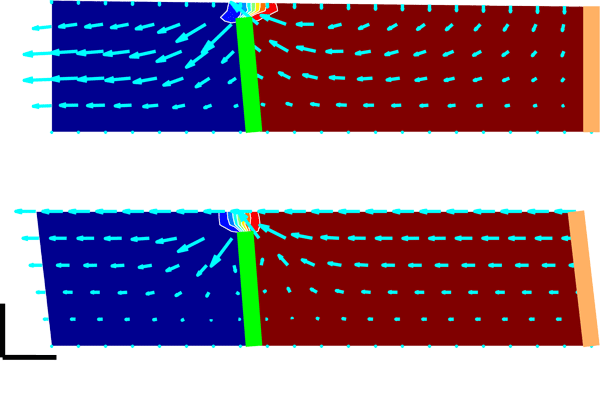
Physical scaled-up model of the inner hair cell fluid mechanics.
Fluorescent particles around a plate representing the inner
hair cell stereocilia were tracked to learn the fluid flow
pattern around the cell. (ME student project
supervised by Drs. Nam and Kelley). (View enlargement)
There are two distinct types of hair cells in the mammalian cochlea. They are inner hair cells and outer hair cells. Unlike the outer hair cells that are attached to the overlying tectorial membrane, the inner hair cell bundles stand freely in the endolymph fluid. The inner hair cells are stimulated by fluid flow. As a result, the inner hair cell bundles are subject to Brownian noise which must be detrimental to sensing faint sounds. Surprisingly, the inner hair cells detect small signals below thermal noise level (< 1 nm basilar membrane vibration). Understanding the fluid mechanics of inner hair cells is important in figuring out why mammals began to utilize the noisy fluid as a stimulator. Nonetheless, measured data on how the inner hair cell bundle interacts with its ambient fluid is very rare. This has led to contradictory arguments—some people think that the inner ear overcomes the thermal noise, while other people argue that the thermal noise helps enhance the sensitivity of hearing. These arguments might be resolved by combining experiments with theoretical studies. Prior theoretical studies (e.g., Nam et al., 2005) tended to extrapolate their fluid mechanics from macro mechanics, which invites further validations. We investigate the micro-fluidics of the inner hair cell bundle through experimental and computational methods.

Inner hair cell fluid mechanics. The inner hair cell is a mechanotransducer that is excited
by the fluid mechanical stimulation. In these simulations, the inner hair cell stereocilia
(green column) are stimulated by two different types of fluid flow.
Scale bars 2 µm. (Srdjan Prodanovic, ME PhD student).